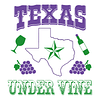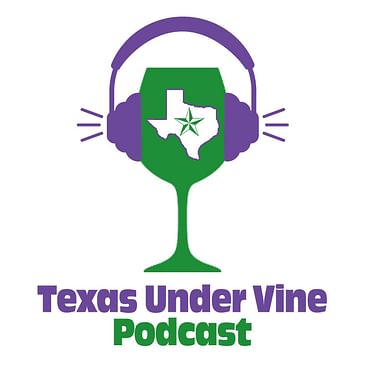Dive into the rustic elegance of Robert Clay Vineyards, nestled in the heart of Texas Hill Country! This episode whisks you away to Mason, where we'll sip on award-winning wines crafted from an extended barrel aging process. Hear the story of this Vigneron-style vineyard and winery and explore their commitment to sustainable, natural farming practices. Get ready for a taste of Texas terroir, innovative winemaking techniques, and the passion that pours into every bottle. So, grab your glass, hit play, and join us as we uncover the hidden gem of Robert Clay Vineyards!
Robert Clay Vineyards
Become a Patreon of Texas Under Vine and get access to bonus content, like photo galleries from the episode, video walkthroughs of the location, and sneak peek videos of where I'm headed next for future episodes!
Video Podcast (https://youtu.be/VfX9_0iijyc)
---------------------------------------------------------------
Locations mentioned in this episode:
Tallent Vineyards
Mandola Vineyards
Texas Tech Viticulture and Enology Program
Sandstone Cellars
La Cruz de Comal Wines
Pebble Rock Cellars (Also check out TUV Episode 6)
Parr Vineyards
---------------------------------------------------------------
Texas Regions Guide (see website for map):
CT - Central Texas
ET - East Texas
GC - Gulf Coast
HC - Texas Hill Country
HP - Texas High Plains
NT - North Texas
ST - South Texas
WT - West Texas
---------------------------------------------------------------
---------
Texas Regions Guide (see website for map):
CT - Central Texas
ET - East Texas
GC - Gulf Coast
HC - Texas Hill Country
HP - Texas High Plains
NT - North Texas
ST - South Texas
WT - West Texas
---------
Be sure to check out https://www.TxWineLover.com!
Merchandise Store (https://texasundervine.company.site)
Become a Patreon of Texas Under Vine and get access to bonus content, like photo galleries from the episode, video walkthroughs of the location, and sneak peek videos of where I'm headed next for future episodes! (https://www.patreon.com/texasundervine)
http://www.texasundervine.com
YouTube: https://www.youtube.com/@texasundervine
Email: scott@texasundervine.com
Facebook: https://www.facebook.com/texasundervine/
Instagram: https://www.instagram.com/texasundervine/
X/Twitter: https://twitter.com...


